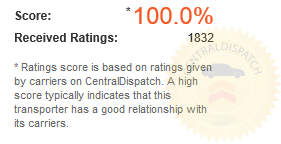Shipping an electric vehicle requires special preparation and considerations that differ from traditional gasoline-powered cars. Whether you’re relocating within the mainland United States, purchasing an electric vehicle from a distant location, or planning a move to Puerto Rico, proper preparation ensures your electric car arrives at its destination in pristine condition and ready for the road. This comprehensive guide will help you navigate the nuances of preparing for electric car shipping, ensuring a smooth and worry-free transport experience.
Electric Vehicle Transport Requirements
Electric vehicles present unique challenges during transport due to their battery systems, specialized components, and often higher value compared to conventional vehicles. Their distinct weight distributions and center of gravity affect how they must be secured during transport to prevent shifting or damage. Additionally, EVs have regenerative braking systems that function differently from conventional brakes, which can impact loading and unloading procedures.
Most auto transport carriers can handle electric vehicles, but it’s crucial to inform your shipping provider that they’ll be transporting an EV so they can prepare the appropriate equipment and ensure their team understands proper handling techniques.
Special Considerations for EV Batteries
The lithium-ion battery pack in your electric vehicle requires specific attention when preparing for auto transport. Temperature management is critical during shipping, as extreme heat or cold can affect battery performance and potentially cause damage. For long-distance transport, especially through regions with temperature extremes, enclosed transport offers better protection from environmental elements.
Battery charge levels also require careful consideration before shipping. Most experts recommend maintaining a charge level between 30% and 80% during transport – this range offers the optimal balance between having sufficient power for any necessary movement while avoiding stress on either a fully charged or nearly depleted battery. Some EVs also have specific transport or “shipping modes” that can be activated to minimize battery drain during transit.
Insurance and Documentation for Electric Car Transport
Proper documentation and insurance coverage are particularly important when shipping high-value electric vehicles. Car shipping generally includes basic cargo insurance and liability coverage to protect vehicles against damage during transit, but you may want to look into additional insurance coverage. Consider a comprehensive shipping insurance policy that specifically acknowledges the risks of transporting an EV. Before shipping, gather all relevant documentation, including your vehicle’s title or lease agreement, registration, and insurance information.
Take time to review the shipping company’s insurance policy to understand coverage limits and deductibles. For EVs still under manufacturer warranty, check whether the warranty covers potential issues that might arise during shipping, as some manufacturers have specific guidelines regarding vehicle transport.
Choosing Between RoRo and Container Shipping
When shipping an electric vehicle to Puerto Rico, you’ll need to decide between Roll-on/Roll-off (RoRo) and container shipping options. RoRo involves driving your vehicle directly onto specialized vessels using built-in ramps, where it’s secured on deck for the journey. This method is typically more economical and offers efficient loading and unloading, reducing overall transit time. For standard EVs without extensive modifications, RoRo provides a cost-effective solution with regular sailing schedules to San Juan.
Container shipping offers superior protection for your electric vehicle by completely enclosing it within a sealed container during ocean transit. This method provides enhanced security and complete shelter from marine elements, salt air, and weather conditions that could potentially affect sensitive electric components and battery systems. While generally more expensive than RoRo, container shipping is particularly beneficial for high-value electric cars, rare models, or those with extensive modifications. For premium EVs with sophisticated battery technology, the additional protection of container shipping can be well worth the investment despite the higher cost.
Preparing Your Electric Vehicle for Shipping
Taking the time to prepare your EV correctly can help prevent potential issues, simplify the entire shipping process, and ensure it arrives in excellent condition. Understanding the fundamentals of preparing electric car shipping starts with proper battery management, securing accessories, and documenting your vehicle’s condition.
Pre-Transport Battery Charging Guidelines
Managing your vehicle’s battery charge level is one of the most critical aspects of preparation. When transported, your EV should have a battery charge between 20% and 50%, as this range is considered optimal for battery health during periods of inactivity. Sufficient power allows transport personnel to safely maneuver your vehicle on and off the vessel when needed, while avoiding a fully charged battery prevents unnecessary stress on cells during transit and reduces the risk of thermal runaway.
If your electric vehicle offers a transport or shipping mode in its settings, activate this feature according to the manufacturer’s instructions. This special mode is designed to minimize battery drain and protect the battery management system during transport.
Securing Loose Items and Accessories
Before shipping your electric vehicle, remove all personal belongings and loose items from both the interior and exterior of the car. Pay special attention to EV-specific accessories such as charging cables, adapters, and portable chargers — these items should be removed and transported separately to prevent potential damage to these valuable accessories and remove any risk of them interfering with the vehicle’s electronic systems.
Secure or remove any aftermarket additions or detachable components specific to your EV model. Remember that shipping companies typically prohibit personal items in vehicles during transport due to insurance limitations and regulatory requirements, and extra weight from personal belongings can affect loading procedures.
Recording Pre-Existing Damage and Vehicle Condition
Thoroughly documenting your electric vehicle’s condition before shipping provides important protection and peace of mind. Conduct a comprehensive inspection, paying special attention to the exterior finish, wheels, windows, and any visible parts of the battery housing or charging components. Take clear, date-stamped photographs from multiple angles, capturing any existing scratches, dents, or other imperfections.
During the inspection, record the odometer reading and the battery’s current state of health if your vehicle provides this information. When your transport company arrives, complete their condition report, noting any discrepancies between their assessment and yours. Keep a copy of this report along with your photos until after delivery and inspection of your vehicle at its destination.
Selecting the Right Auto Transport Company
Finding a qualified auto transport company with EV experience is essential for a successful shipping experience. Not all transport providers have the specialized knowledge required for properly handling and securing electric vehicles during transit.
Evaluating EV Transport Experience and Expertise
When researching potential auto transport companies, ask about their experience with electric vehicles similar to yours. Experienced providers will understand the unique requirements of shipping EVs, including proper securing methods that account for their weight distribution and battery location. They should also be familiar with any special precautions needed for your particular make and model.
Look for companies that specifically mention electric vehicle transport in their services and ask detailed questions about their handling procedures. A knowledgeable provider will be able to explain how they address the unique aspects of EV transport, including battery safety considerations, charging requirements, and proper loading techniques that protect sensitive undercarriage components.
Comparing Shipping Costs and Services
Shipping costs for EVs often differ from traditional vehicles due to their weight, value, and specific handling requirements. When comparing quotes, ensure you’re evaluating comparable service levels across providers.
Beyond the base price, evaluate what additional services each company offers. Some may provide more frequent updates, guaranteed pickup and delivery windows, or specialized handling that benefits electric vehicles. The lowest quote isn’t always the best value, especially when shipping a high-value EV with complex systems.
Reading Reviews and Verifying Credentials
A reputable auto transport company should have positive reviews, particularly from customers who have shipped electric vehicles. Look for specific mentions of EV shipping experiences in customer feedback and pay attention to how companies responded to any issues that arose during transport. This can provide insight into their customer service quality and problem-solving abilities.
Verify that any company you consider is properly licensed, insured, and registered with the Department of Transportation (DOT). Check their MC (Motor Carrier) number and DOT number through the Federal Motor Carrier Safety Administration website to confirm their operating authority and safety record. A legitimate company will readily provide this information and have no issues with you verifying their credentials.
Why Choose Puerto Rico Car Transport?
At Puerto Rico Car Transport, we understand the unique challenges involved in shipping EVs to and from Puerto Rico. With over 30 years of experience in the auto transport industry, our team has developed specialized expertise in handling all types of vehicles, including the latest electric models with their advanced technology and specific requirements.
We offer both door-to-port and port-to-port services for EV shipping, with nationwide pickup available from any location in the continental United States. Our standard RoRo service provides the most secure and affordable way to ship your electric vehicle, with your car safely loaded into the actual ship or barge and protected from all outdoor elements. For customers seeking maximum protection for high-value electric vehicles, we also offer enclosed transport options.
Our shipping specialists provide personalized guidance throughout the entire process, from preparation recommendations specific to your EV model to documentation assistance and real-time shipment tracking. With Puerto Rico Car Transport, you can trust that your electric vehicle will be handled with the expertise and care it deserves, arriving safely at its destination whether you’re shipping to San Juan or anywhere nationwide.
Request a free quote today to get started.
Frequently Asked Questions
How should I prepare my electric car’s battery before shipping?
When preparing your electric car for shipping, maintain a battery charge level between 20% and 50%. This range prevents stress on the battery during transit while ensuring sufficient charge for transport. If your vehicle has a transport or shipping mode, activate it according to the manufacturer’s instructions to minimize battery drain.
Is container car shipping worth the extra cost of shipping my electric vehicle?
For most electric vehicles, especially high-value models, container shipping is worth the additional cost when crossing oceans. This method provides a sealed environment that shields your EV from salt spray, maritime weather, and humidity fluctuations — all factors that can potentially damage sensitive electric components and battery systems during ocean transit.
What documentation do I need when shipping my electric vehicle?
When shipping your electric vehicle, you’ll need your vehicle title or lien holder authorization, current registration, government-issued ID, and proof of insurance. It’s also beneficial to have documentation of your battery’s warranty information and current health status. Make copies of all documents and keep the originals with you. If someone else will be receiving the vehicle at its destination, prepare a notarized authorization letter granting them permission to accept delivery.
How do I find an auto transport company experienced with shipping electric vehicles?
During your initial consultation, ask auto transport companies about their experience with EVs. Inquire about their handling procedures for electric cars, knowledge of battery safety protocols, and familiarity with your specific make and model. Check reviews from other EV owners who have used their services and verify their credentials with the Department of Transportation.


